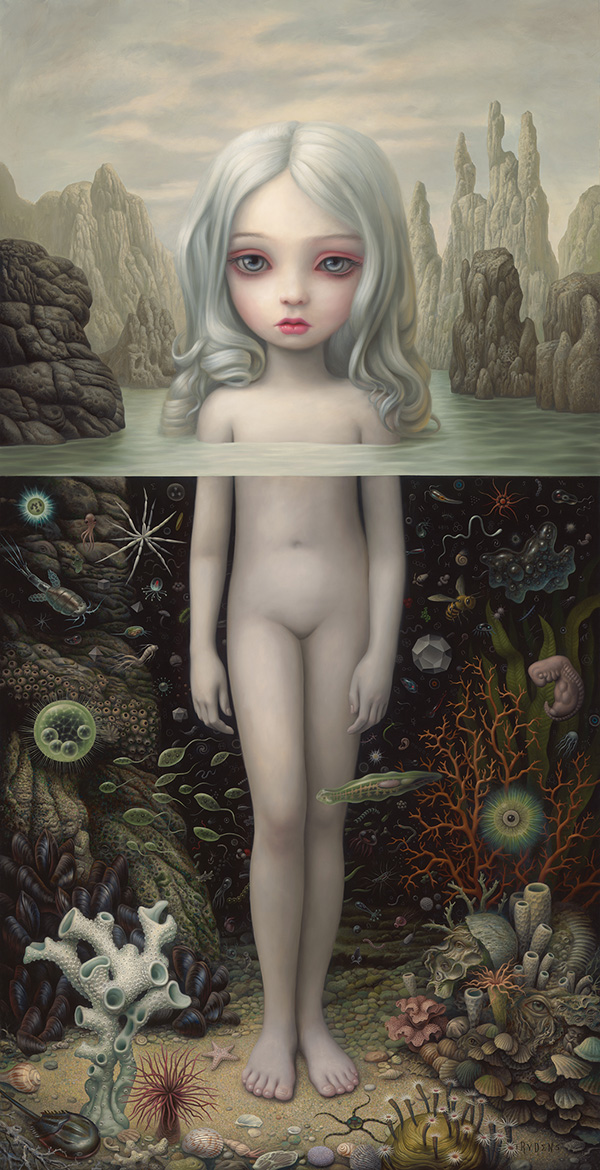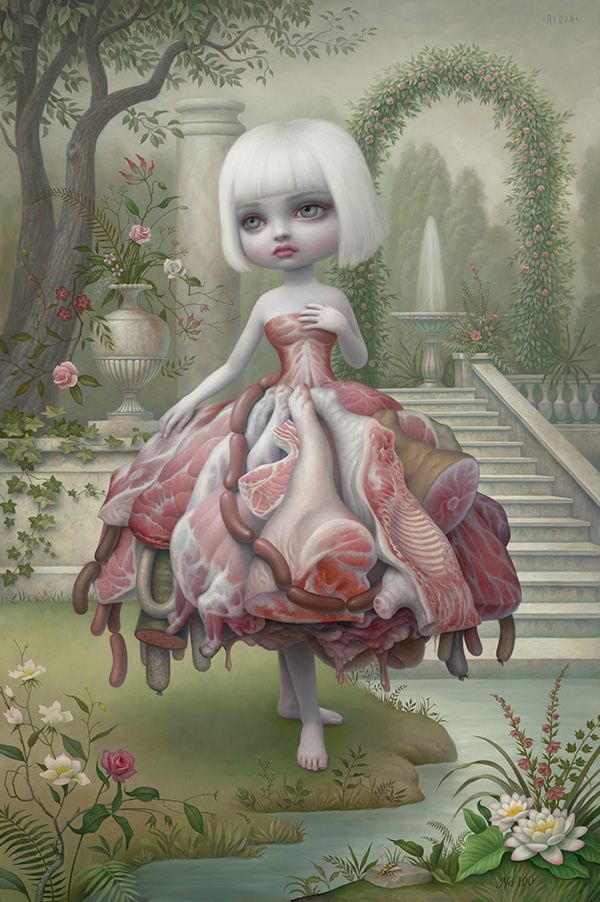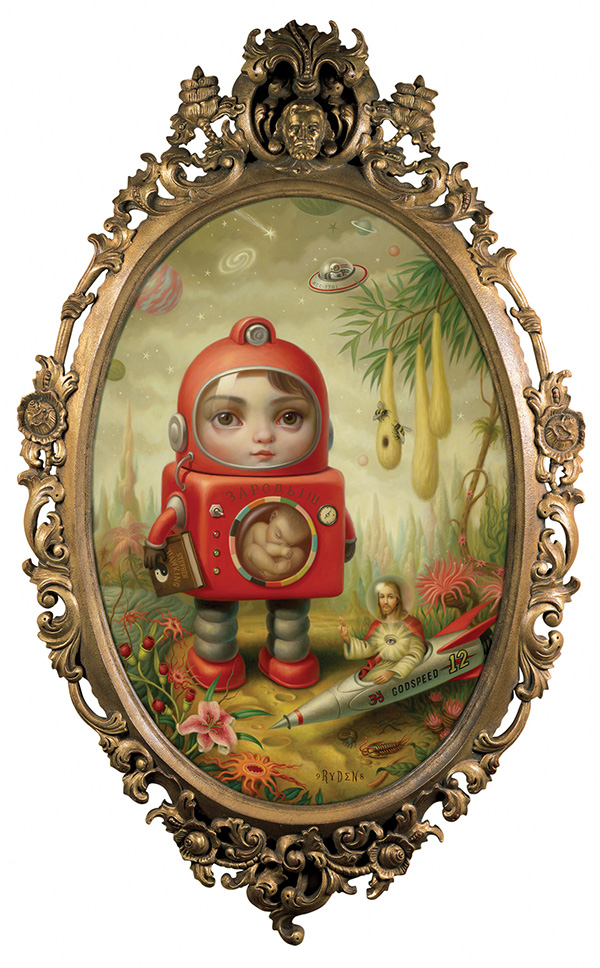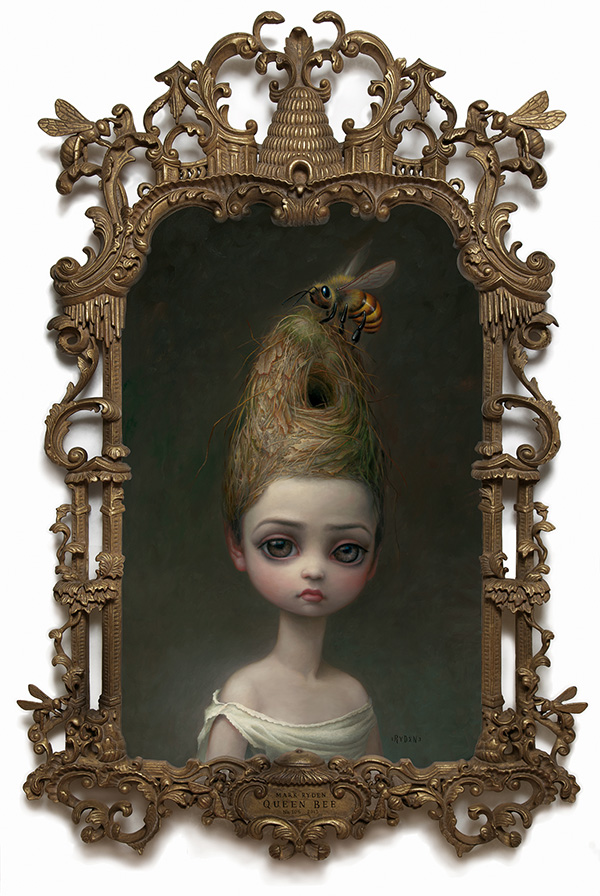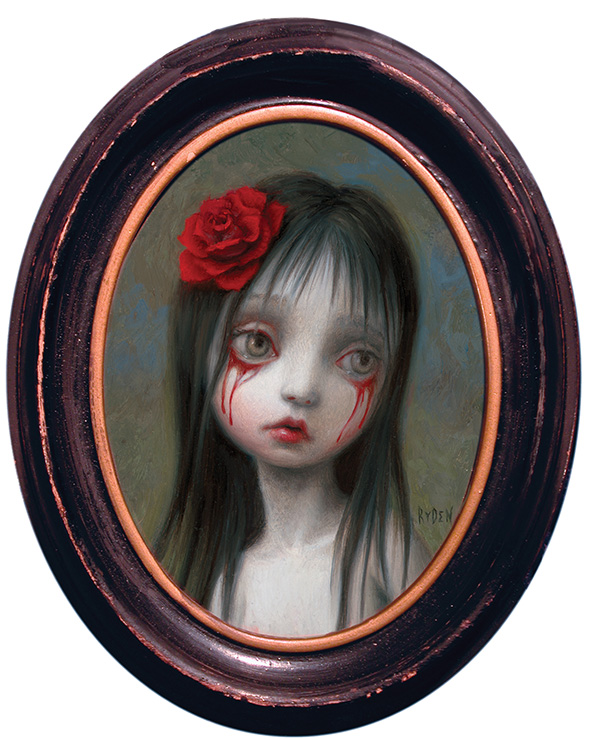ART-PREVIEW:Mark Ryden-Cámara De Las Maravillas
 During the mid ‘70s, a new Art Movement emerged in the U.S., mostly in California, known as “Lowbrow” or “Pop Surrealism” adopting a more illustrative, representational style, using streetwise aesthetics. Mark Ryden is considered ‘the godfather’ of the movement, a significant proportion of which is flirting with allegory in a post-surrealism context.
During the mid ‘70s, a new Art Movement emerged in the U.S., mostly in California, known as “Lowbrow” or “Pop Surrealism” adopting a more illustrative, representational style, using streetwise aesthetics. Mark Ryden is considered ‘the godfather’ of the movement, a significant proportion of which is flirting with allegory in a post-surrealism context.
By Dimitris Lempesis
Photo: Centro de Arte Contemporáneo of Málaga Archive
“Cámara de las maravillas” the first European Retrospective of Mark Ryden’s work, is on presentation at Centro de Arte Contemporáneo of Málaga, featuring small and large-format canvases, drawings, dioramas and several sculptures, which together summarise and provide an insight into the complex universe of the artist. Mark Ryden’s images are highly symbolic, rich in cultural references, and there is an implication of social commentary through his ambiguous and conversational outcomes. Mark Ryden began as a commercial artist and created art for album covers such as Michael Jackson’s “Dangerous”, Red Hot Chili Peppers’ “One Hot Minute”, and Aerosmith’s “Love in an Elevator”, also book covers including Stephen King’s novels “Desperation” and “The Regulators”. Ryden’s first solo exhibition entitled “The Meat Show” was in Pasadena, California in 1998. Meat is a reoccurring theme in his work. He observes the disconnect in our contemporary culture between meat we use for food and the living, breathing creature it comes from. “I suppose it is this contradiction that brings me to return to meat in my art”. According to Ryden, meat is the physical substance that makes all of us alive and through which we exist in this reality. All of us are wearing our bodies, which are like a garment of meat. Ryden’s vocabulary ranges from cryptic to cute, treading a fine line between nostalgic cliché and disturbing archetype. Seduced by his infinitely detailed and meticulously glazed surfaces, the viewer is confronted with the juxtaposition of the childhood innocence and the mysterious recesses of the soul. His world is synthesized by a nostalgic sweetness tinged with darker, more complex psychic material that lies beneath the surface of cultural clichés. Populated by President Lincoln, Jesus Christ, Buddha, Father Christmas, and the devil, his work features mysterious archetypal characters that are confronted by childlike figures with enormous soulful eyes. These sweet yet disturbing protagonists appear to read the thoughts of the observer, who at first shies away from such audacity but is ultimately captured, unable to break away from their compelling gaze. One of the things that Ryden has in common with some of the op-artists is that he leaves a conceptual margin for the viewer to fill in with their own opinion. The descriptive meaning is threefold: the obvious, the implicated and the viewer’s interpretation. Two of his works on presentation at the exhibition “Turn the Page: The First 10 Years of Hi-Fructose Magazine” at the Museum of Contemporary Art in Virginia Beach, were accused by Catholic League as “anti-Christian bigotry”. In “Fountain” (2003) a young girl is holding her severed head, and blood is spraying up and showering her in blood. “Rosie’s Tea Party” (2005) shows a young girl with a crucifix around her neck wearing a First Communion dress is sawing into a hunk of ham. An inscription on the edge of the slice reads “Mystici corporis Christi” (Mystical body of Christ). A bottle of wine with a picture of Jesus on it rests on the table across from an infant, also seated at the table. Asked whether people impose their own interpretations of his works, Ryden says “There are many symbolic meanings in my art that I myself am not necessarily conscious of. The most powerful meanings in art come from another source outside an artist’s own literal consciousness. To me, tapping into this world is the key to the making the most interesting art. Some people find my refusal to explain everything in my work deeply dissatisfying. They can’t stand mystery. They need to literalize it all and tie it up in a neat little package”.
Info: Curator: Fernando Francés, Centro de Arte Contemporáneo of Málaga, Calle Alemania, S/N, Málaga, Duration: 16/12/16-5/3/17, Days & Hours: Tue-Sun 10:00-20:00, http://cacmalaga.eu
